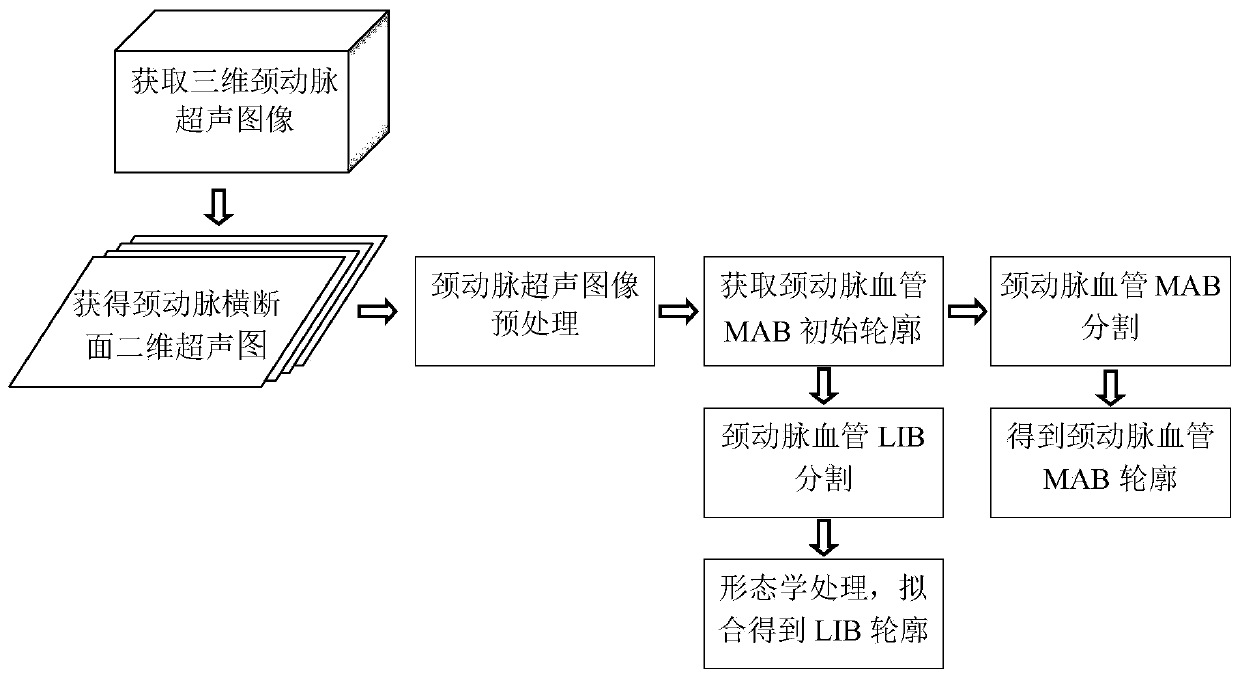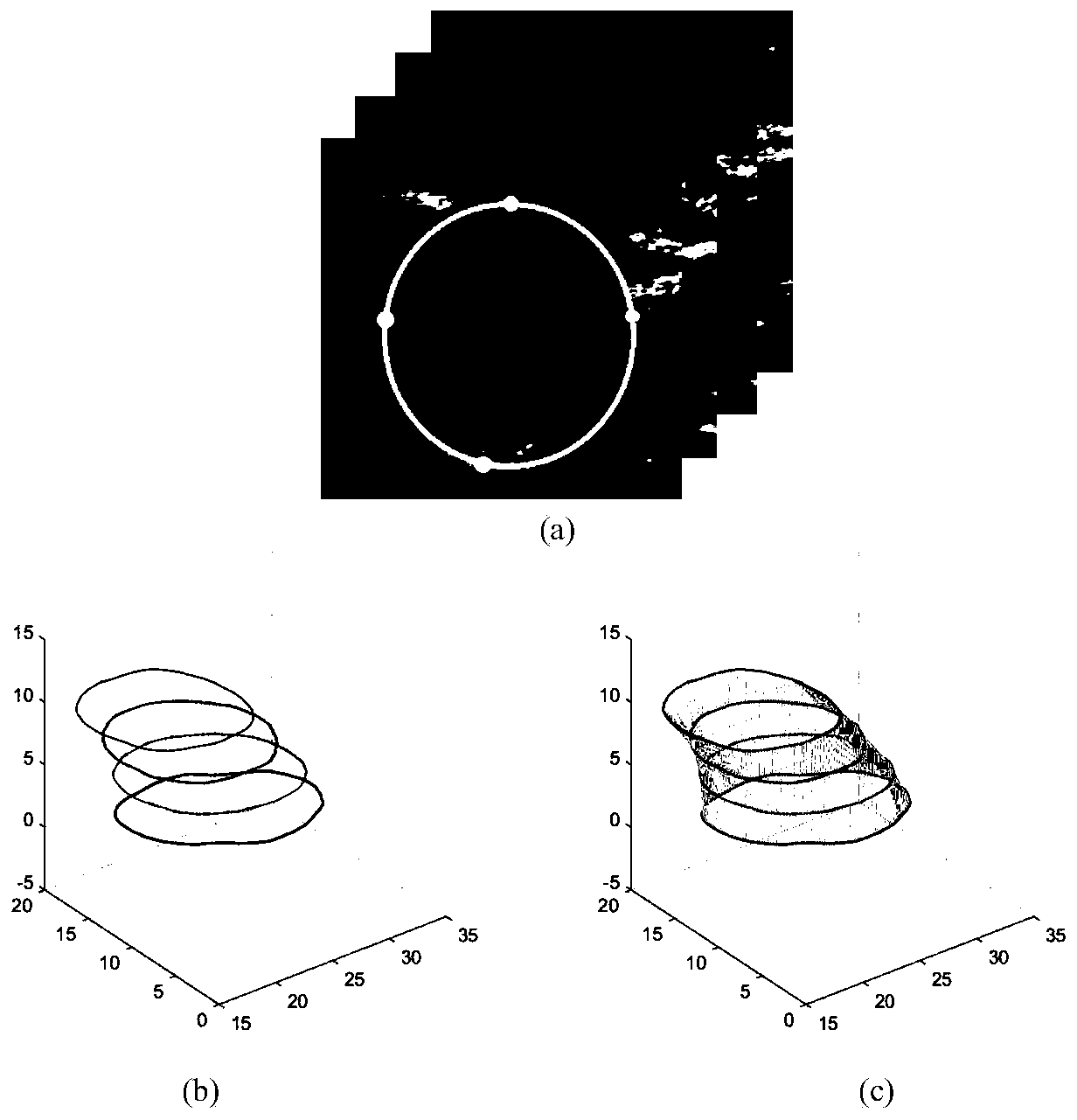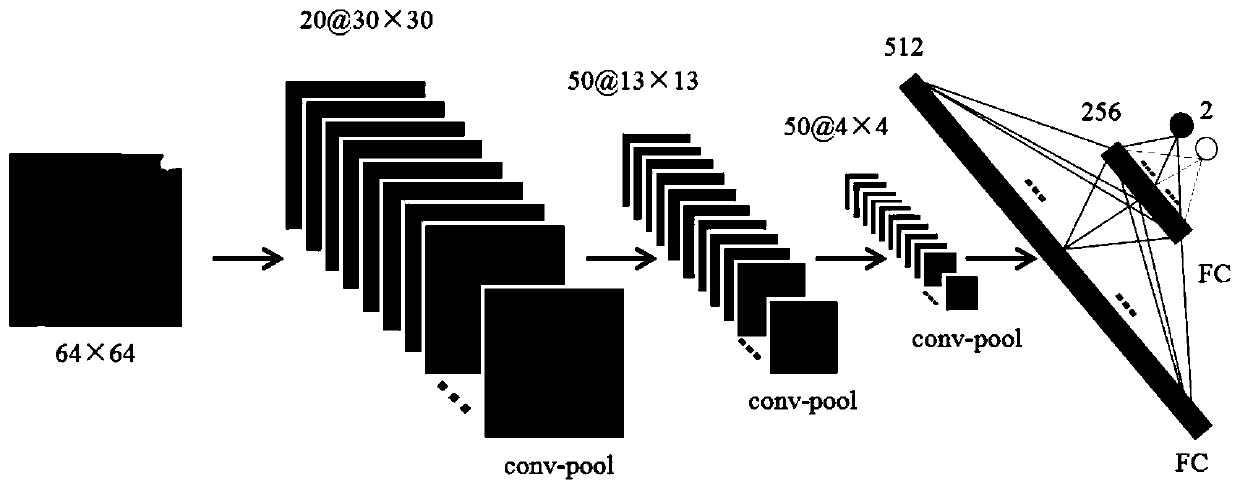Three-dimensional carotid artery ultrasonic image blood vessel wall segmentation method based on deep learning
An ultrasound image, deep learning technology, applied in the intersection of computer technology and medical images, can solve problems such as only MAB segmentation, time-consuming, and a lot of manual participation.
- Summary
- Abstract
- Description
- Claims
- Application Information
AI Technical Summary
Problems solved by technology
Method used
Image
Examples
Embodiment 1
[0061] In the present invention, the carotid artery wall segmentation method based on deep learning in three-dimensional ultrasound images, such as figure 1 shown, including the following steps:
[0062] (1) Obtain three-dimensional carotid artery ultrasound images. The actual three-dimensional carotid ultrasound images of the present invention come from clinical practice. Three-dimensional ultrasound acquisitions were performed on the left and right carotid arteries of 38 patients with carotid artery stenosis exceeding 60%, and a total of 144 three-dimensional carotid artery ultrasound images were obtained.
[0063](2) Cutting the three-dimensional ultrasonic body image into several two-dimensional carotid artery cross-sectional ultrasonic images, and extracting a carotid artery cross-sectional two-dimensional ultrasonic image at intervals of three frames (at this time, the ISD is 4 section planes, two in the present invention) The distance between slice images is 0.1cm), an...
PUM
 Login to View More
Login to View More Abstract
Description
Claims
Application Information
 Login to View More
Login to View More - R&D
- Intellectual Property
- Life Sciences
- Materials
- Tech Scout
- Unparalleled Data Quality
- Higher Quality Content
- 60% Fewer Hallucinations
Browse by: Latest US Patents, China's latest patents, Technical Efficacy Thesaurus, Application Domain, Technology Topic, Popular Technical Reports.
© 2025 PatSnap. All rights reserved.Legal|Privacy policy|Modern Slavery Act Transparency Statement|Sitemap|About US| Contact US: help@patsnap.com



